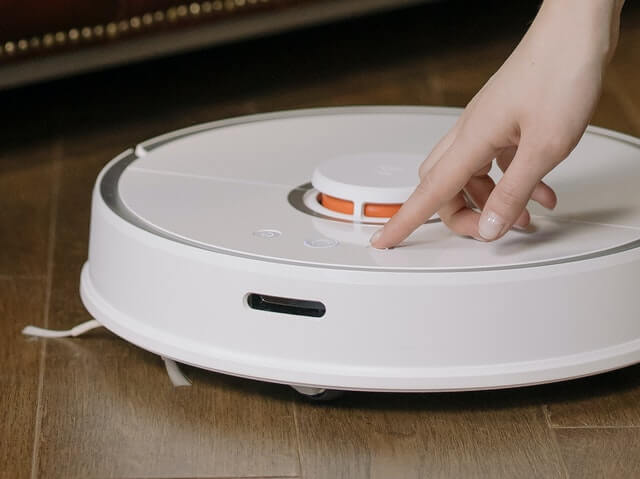By 2026, the global cleaning robot market size is predicted to reach $24 billion, increasing at a rate of 22.9 percent CAGR during the forecast period, according to PR Newswire. New technologies are being developed every day to simplify processes and increase efficiency across all industries. And the janitorial industry isn’t an exception. Innovative cleaning equipment and approaches streamline cleaning processes and increase employee productivity. As a business owner, you also enjoy a high return on investment within a short timeframe. In simple terms, leveraging tech to boost your business operations, including maintaining hygiene, is one of the best ways to reduce expenses. So if you’re looking to enhance your office cleaning practices, check these tech innovations transforming how businesses maintain clean workspaces.

Robot cleaners
Robots have been in use for many decades in various industries, but the cleaning sector is yet to utilize them to a significant extent. Currently, janitorial companies use robotics as autonomous vacuum cleaners to supplement human cleaners. Ideally, cleaning robots save workers from simple and repetitive tasks, allowing them to pay attention to more complex and thorough intensive cleaning. However, this aspect may change soon because robots represent the future of cleaning.
As robotics technology continues advancing, cleaning robots could eliminate the need for humans to handle dangerous jobs like washing windows at dangerous heights. Moreover, robots can perform various tasks like mopping, glass cleaning, vacuuming, polishing, and removing paint. Unlike humans, robots don’t get tired, meaning they can mop many square feet per hour. Besides improving efficiency, other benefits of using cleaning robots include increased cleaning consistency, positive perception, overcoming staffing challenges, and validating cleaning processes.
Data-driven cleaning equipment
Another great innovation that janitorial service providers are beginning to adopt is data-driven cleaning. This technology relies on connectivity via the internet or the Internet of Things (IoT). Some cleaning companies have already adopted this innovation to track real-time data on supplies and cleaning schedules. With data-driven cleaning tools, facility managers can monitor office spaces, stadiums, airports, and hospitals to ensure tissue, towel, and soap dispensers are stocked at all times.
In addition to tracking metrics, connected janitorial devices help in the long-term analysis of industry patterns and trends. That way, cleaners can optimize their schedules, resulting in increased efficiency and cost savings. However, to enjoy these benefits, commercial cleaners must know how to implement data-driven facility cleaning practices. This entails evaluating cleaning challenges and setting realistic goals, choosing the right software provider, and engaging workers in the process.
Self-cleaning glass
This is probably one of the most interesting inventions that’s changing how we maintain clean windows. Thanks to advancements in nanotechnology, commercial property developers are now installing windows with the capabilities to clean themselves. But how can glass clean itself and maintain the shine? Self-cleaning windows aren’t made of simple glass, as many people assume. They feature an ultra-thin layer of titanium dioxide, which is a photocatalyst.
In short, titanium dioxide is photocatalytic, meaning ultraviolet rays activate it. When this happens, electrons present in the film coating of titanium dioxide are generated, and the self-cleaning process begins. Interestingly, self-cleaning windows are water-loving or hydrophilic. This means they attract water molecules, causing them to spread in a thin film. As a result, the water breaks down dust and dirt, leaving the windows clean and shining. While this technology seems ideal to replace humans, self-cleaning windows still need to be professionally cleaned. That’s because they cannot get rid of stubborn stains like bird droppings or other sticky stains by themselves.
Smart dispensers
Proper hand hygiene is essential for getting rid of germs and viruses that cause severe health conditions. Several companies have been working hard to develop smart touch-free disinfectant dispensers to help reduce the risk of contracting flu, cold, and other diseases. Hands-free disinfectants reduce the chances of coming into direct contact with contaminated surfaces or items. This translates to a reduced spread of germs within the workspace. So, you don’t have to worry about low employee productivity and high cases of absenteeism.
Most smart dispensers produce a sound whenever someone isn’t following hygiene regulations. They also notify users when the disinfectant supply is almost running out. Other touch-free dispensers, like those introduced by GOJO, have additional features. For example, they eliminate the need for janitors to keep changing batteries because each refill is integrated with a battery. In short, when cleaners replace refills, the batteries are automatically replaced too. You may also opt for plug-in models to monitor hygiene compliance and supply and add more upgrades as technology advances.
When your business uses the latest technology to clean workspaces, maintenance personnel can perform tasks faster and respond to issues quickly, thus saving you time and money. This is because the latest technologies aim to improve efficiency by eliminating the need for humans to handle repetitive tasks. Using robotics, smart dispensers, data-driven cleaning tools, and self-cleaning windows, cleaning office spaces becomes less tedious and inexpensive.







